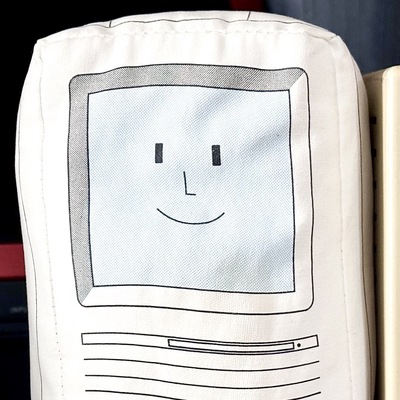Drivespace was what enabled me to play Baldurs Gate 1 back in the day. My specs back then:
- 32MB RAM
- Pentium166 MMX
- 500ish MB drive (My 2GB went bust, so I used an old spare drive for quite a while)
- 16X CDROM
- 2X CD Burner… yarr, that made me a lot of money
- 3dFX Voodoo2 8MB coupled with an ATI Rage Pro
- Soundblaster Live
wooo, look at mr high end over here :-)
640kb RAM 2 x 512 floppies CGA green screen / monochrome
These days, modern filesystem like ZFS has compression and data deduplication (identical data only stored once) support, as well as other useful features such as snapshots and copy-on-write.
Which came first, DriveSpace or Norton Speed Disk? I thought Norton was first.
Different tools. Speed disk was a disk defragmenter, DriveSpace was whole disk compression. The Norton tool you’d have used a lot if you used DriveSpace was Norton Disk Doctor.
And as I recall, Norton had all the tools long before MS-DOS included them by default. It was sort of a dick move by Microsoft, the sort of thing they’re famous for now.
Raise your hand if you used to sit and watch Norton’s defragger do its thing! 🤩
DOS has always? had chkdsk, but ndd had a knack for being able to recover data from minor corruptions way better than chkdsk did. Scandisk (dos 6 version of chkdsk) was just a prettier face, ndd was still better.
Between ndd, Spinrite, and I can’t remember the name of the undelete tools, I saved a lot of homework assignments.
Remember, this was way before Windows.
it’s 1994
Windows 3.1 came out in 1992. Yes you still were in DOS a lot back then, but it was hardly “way before windows”.
Speaking of just hunting for random stuff in DOS, my personal favorite “what’s this?” in DOS was Gorillas.bas https://en.wikipedia.org/wiki/Gorillas_(video_game)?wprov=sfti1
I agree, but Windows 3.x was more a shell on top of MSDOS and had a more niche market, and windows 95 didn’t get most popular OS until late 1998. So for a lot of people that was way before windows. Also tech went a lot faster back then. Updates to an old system isn’t as important if it’s not connected to the world of online hackers.
Windows 95 was also a shell on top of MSDOS. Windows NT wasn’t running on top of DOS, but it was primarily for business use until Windows XP.
This is a common misconception, and it’s funny that people still believe it all these years later.
While it’s true that Windows 95 relied on MS-DOS for bootstrapping and provided a DOS-like interface for running legacy applications, it wasn’t “just a shell” on top of DOS. Windows 95 introduced a 32-bit multitasking environment, a completely new user interface, and a separate set of APIs for software development (Win32). It had its own kernel that provided services like memory management and hardware abstraction, separate from DOS.
The integration with DOS was mainly for backward compatibility, allowing users to run older software. But once you were in the Windows 95 environment, DOS was essentially sidelined, and Windows 95’s own features and architecture took over.
Exactly, here’s the canonical The Old New Thing post on the topic. https://devblogs.microsoft.com/oldnewthing/20071224-00/?p=24063
tldr:
“MS-DOS served two purposes in Windows 95: It served as the boot loader. It acted as the 16-bit legacy device driver layer.”“Among other things those drivers did was “suck the brains out of MS-DOS,” transfer all that state to the 32-bit file system manager, and then shut off MS-DOS.”








